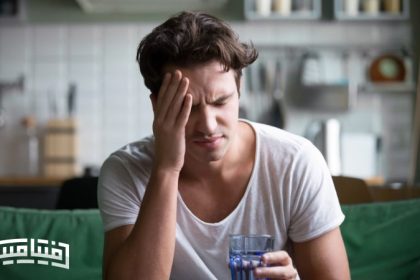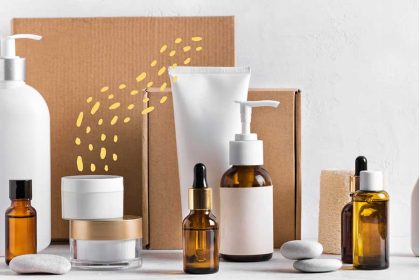Pimples are swollen cysts that develop in the underlying tissues of the skin. Subcutaneous pimples are among the most common types of pimples that affect many people. These pimples may appear in different parts of the body, but their appearance on the face is more uncomfortable and bothers the person. If you are also facing the problem of subcutaneous acne, stay with us in the rest of this article from Miss and Mr. magazine to answer the question of what is good for subcutaneous acne and learn about the treatment of subcutaneous acne.
What is subcutaneous acne?
Subcutaneous acne is one of the types of skin acne that occurs in the form of red, swollen and large lumps deep in the skin. These pimples are usually painful and may be experienced by different people, but those with oily skin and hormonal imbalances are more prone to subcutaneous pimples than others.
At first, fat and dead cells block the pores of the skin, and then bacteria also penetrate, and the combination of dead cells, fat, and bacteria causes all kinds of pimples under the skin. These types of pimples may be seen in a small area of the face and body or involve a large area of the body.
Cause of subcutaneous acne
The cause of acne is not known for sure, but it is said that acne is related to androgens. The level of this hormone is higher in teenagers and leads to skin changes that eventually block skin pores. Other causes of subcutaneous acne include the following:
- Age (mostly teenagers)
- family history
- Hormonal changes during menopause
- Stress and anxiety
- Menstrual cycle changes
- pregnancy
- Polycystic ovary syndrome
- Zibad sweating
- Some inappropriate skin products
- Taking certain medications
Contrary to the opinion of many people, chocolate consumption, sexual activities such as masturbation, eating fatty and spicy foods and not washing the skin enough are not the cause of subcutaneous acne!
Types of subcutaneous acne
Acne under the skin is a general term that we use in Persian language. The most common type of acne is cystic acne, which appears as a large pimple under the skin. There is another type of subcutaneous acne which is called acne nodule and it is a hard acne under the skin.
Nodular acne and cystic acne are very similar to each other. Both of these pimples are deep and painful bumps in the lower layers of the skin. Also, with the disappearance of these pimples, the pimples may be seen in the form of scars and scars. But these two painful hard pimples under the skin, i.e. acne nodule and cystic, have differences as follows:
- Cystic acne is filled with fluid and pus.
- Acne nodule is more solid and harder than cystic, because it does not contain liquid and is solid.
Symptoms of subcutaneous acne

Cystic acne is the largest type of acne in terms of size, which is deeper than other acne. These pimples occur mostly on the face. Pimples under the skin may be the size of a pea or even involve a part the size of a small coin on the surface of the skin. Symptoms of subcutaneous acne are as follows:
- Large, pus-filled or hard cysts
- Redness and swelling of the boil
- White bumps
- Pain when touching the boil
- Sensitivity and itching
- Yellowish-white pus oozing when the boil bursts
- Scaling of the weld surface
Place of subcutaneous acne
Some people think that acne only occurs on the face, but this is not the case. Despite the fact that subcutaneous pimples are more noticed on the face, but these pimples may appear in different areas of the body. The places where subcutaneous pimples are created are the following areas:
- hip
- Upper back and shoulders
- Chest
- Neck
- the arms
Treatment of subcutaneous acne

If you are looking for immediate facial acne treatment or acne treatment in five minutes, at the very beginning we must say that removing subcutaneous acne requires patience and this problem cannot be solved overnight. To treat these pimples, you should see a specialist doctor. After the examination and according to your skin conditions, the doctor will choose a suitable treatment method.
drug therapy
Appropriate drugs for the treatment of acne under the skin of the face should only be taken as prescribed by a doctor. Remember not to use any medicine to treat small pimples under the skin of the face or other organs without consulting a doctor. Among the effective drugs to eliminate subcutaneous acne, the following can be mentioned:
- Isotretinoin (Accutane)
- Oral antibiotics
- Topical retinoids
- spironolactone (aldactone)
- Oral contraceptives for women
- Benzoyl peroxide
- Steroids injected into the cyst
Home treatment for subcutaneous acne
As we said, instead of thinking about the immediate treatment of subcutaneous acne, be patient and follow your treatment plan as recommended by your doctor. Some home remedies can be effective in treating pimples under the skin. Among these quick treatment methods for subcutaneous acne, the following can be mentioned:
- Use gel solutions and lotions to kill bacteria and reduce skin inflammation.
- Do not manipulate the pimples and if the pimple bursts, wash the skin with a suitable detergent so that the infection does not spread.
- Use cool fruits like cucumber as a mask for pimples to reduce inflammation.
- Aloe vera plant gel works like a natural ointment under the skin and its use helps the treatment process.
- Using vitamin A derivatives is effective in removing dead skin cells and reducing pimples.
Complications of subcutaneous acne

Among the types of acne, cystic acne is more likely to leave scars. Manipulating pimples and bursting them causes the spread of bacteria and infection and the formation of more pimples. Also, popping a pimple under the skin increases the possibility of creating wounds and scars and even bacterial infections such as cellulitis.
After treating a pimple under the skin, the pigmentation of the pimple may change and become darker or lighter. These skin spots are pink, purple, red, brown or black in different people. Gradually, the boil is restored and the skin spots disappear. The time required for skin repair is different for each person and ranges from a few months to a year.
If you also have a large pimple under the skin, treat it first so that the active pimples are treated. After that, you can solve the problem of acne and pimples through the following methods:
- Chemical peeling of the skin
- Dermabrasion by a dermatologist
- Laser peeling by a dermatologist
Preventing acne breakouts
Now we have to answer the question, how can we prevent the formation of fat pimples under the skin of the face? As we said, subcutaneous acne may have various reasons such as genetics, pregnancy, hormonal problems, etc., so there is no possibility of completely preventing subcutaneous acne. Of course, proper skin care and lifestyle modification can reduce the possibility of subcutaneous acne. Among the methods to prevent subcutaneous acne, the following can be mentioned:
- Have a skin routine suitable for your skin condition and buy high-quality products from reputable brands.
- In the morning and at night, wash your face with appropriate cleansers to remove skin impurities.
- Use non-comedogenic cosmetics.
- Apply sunscreen suitable for your skin type even on cloudy days.
- Never sleep with makeup on and before going to bed, clean the skin surface with a suitable cleanser and toner.
- Wash your body after exercise to remove fat and bacteria from the surface of the skin.
- Avoid stress as much as possible and pay attention to your mental and emotional peace.
- Follow a healthy diet and drink enough water.
Prevention of subcutaneous acne by buying the right cosmetic products

In this article, we talked about subcutaneous acne and introduced ways to treat subcutaneous acne. As we said in the previous section, with skin care and following a proper skin routine, the possibility of subcutaneous pimples can be greatly reduced. Remember to use quality skin care products to have healthy skin.
To buy cosmetics and skin care products, choose only reputable brands and go to reliable stores. Miss and Master site is a reliable and long-established online store in the field of selling cosmetics, skin and hair care products, perfume and cologne. In this store, the best products are available at reasonable prices.
Frequently Asked Questions
What is subcutaneous acne and what are its types?
Pimples are red, swollen, and painful lumps that develop deep in the skin. The subcutaneous acne may be liquid and pus known as cystic acne or hard and solid in this case known as acne nodule.
What is the cause of subcutaneous acne?
Age, family history, hormonal changes during menopause, stress and anxiety, changes in the menstrual cycle, pregnancy, polycystic ovary syndrome, excessive sweating, some inappropriate skin products, and the use of certain medications are among the causes of subcutaneous acne.
What are the symptoms of subcutaneous acne and in which organs does it occur?
Subcutaneous pimples are large and pus-filled cysts that are associated with symptoms such as redness and swelling, white bumps, pain when touching the pimple, sensitivity and itching, and peeling of the pimple surface. Subcutaneous acne occurs on the face, chest, buttocks, back and shoulders, neck or arms.
How to get rid of pimples under the skin?
It is possible to treat acne under the skin by taking some medicines. The prescription of these drugs is done according to the doctor’s opinion, so see a doctor for the treatment of subcutaneous acne. The use of gel solutions and lotions, fruit masks, aloe vera plant, and vitamin A derivatives are effective in the treatment of subcutaneous acne.
References:
healthline.com
clevelandclinic.org
RCO NEWS
RCO















